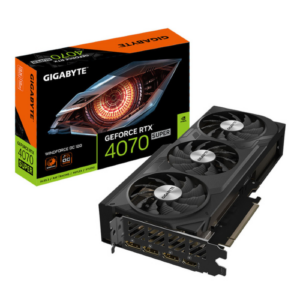The Nvidia GeForce RTX 4070 Super graphics card is a great choice for budget-conscious gamers who want high-end results without the investment.
Nvidia GeForce RTX 4070 Super graphics card review: Peak performer
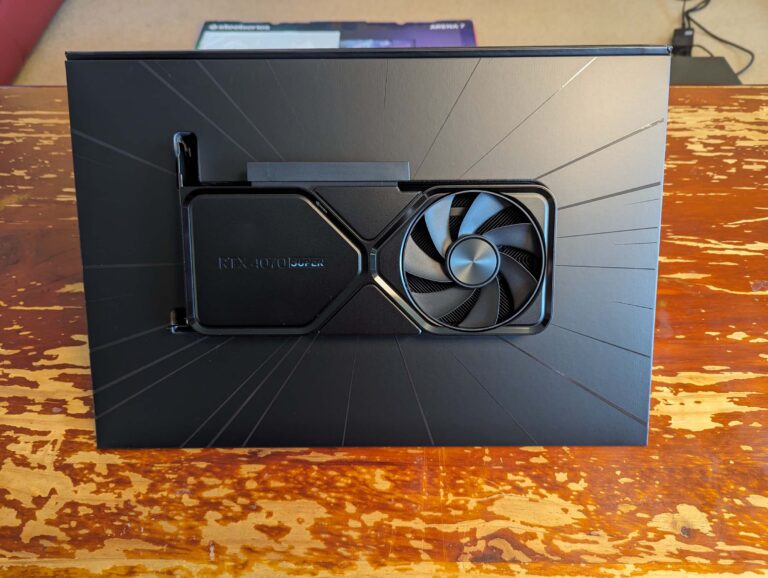
Nvidia follows a release pattern for each of its graphics processing unit (GPU) generations. First, there are the big hitters with “80” and “90” in the name. Then comes the “60” and “70” graphics cards. Those gamers patient enough to wait longer are rewarded with the “Ti” and “Super” revisions, which tend to have better pricing and benefit from some extra engineering tweaks. I was very impressed by the power of the Nvidia GeForce RTX 4080 at launch (and continue to be). But I’m blown away by what the Nvidia GeForce RTX 4070 Super can achieve in a smaller, less-power-hungry package.
How much does RTX 4070 Super graphics card cost in Australia?
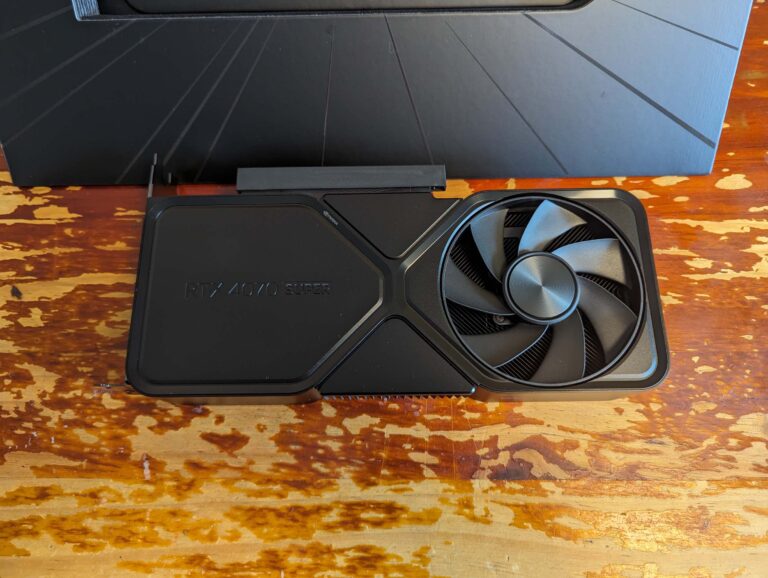
When the Nvidia GeForce RTX 4080 launched, many (rightfully) balked at the $2K+ asking price. Fast-forward to more recent times and the 4080 prices have settled between $1,500 and $2,000. For the RTX 4070 Super, the price range is between $1,000 and $1,500-ish. If you want to weigh up an RTX 4070 Super against its AMD equivalent—the RX 7900 GRE—those GPUs come in at just under $1,000. There is money to be saved if you want to go with an AMD graphics card, but paying extra for the RTX 4070 Super will generally mean better support for games that include Nvidia features like DLSS (not to mention superior ray tracing performance).
Nvidia GeForce RTX 4070 Super design and installation
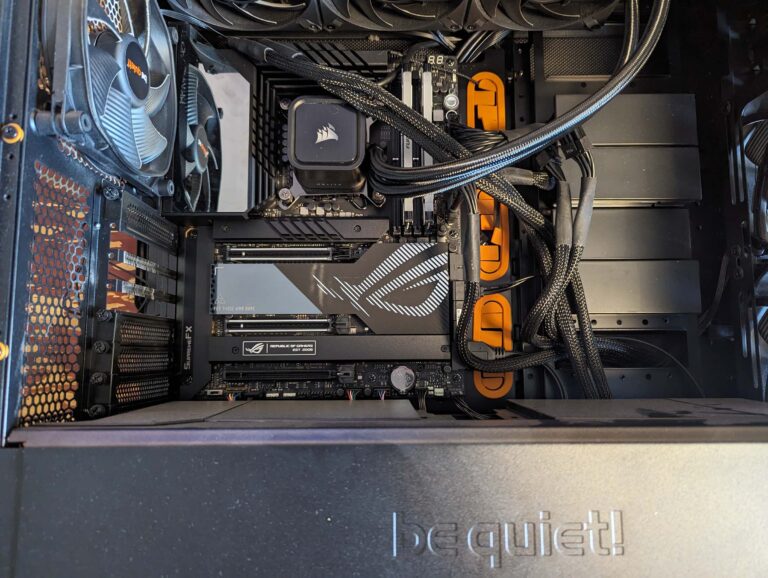
Compared to its 4080 brethren, the Nvidia GeForce RTX 4070 Super is tiny. Instead of a three-slot anvil, the RTX 4070 Super is a two-slot graphics card with a whole lot less heft. More importantly, the RTX 4070 Super only needs two eight-pin power connectors connected to an 18-pin adaptor instead of the three connectors required for the 4080 and above. At least, that was the case for the Nvidia-provided Founders Editions I was using for comparison in my review; third-party graphics cards may vary.
Regardless, I’m a fan of Nvidia’s shift away from the black-and-silver design of its original 40-series graphics cards and into an all-black look. And slotting in the RTX 4070 Super feels a lot more secure with the slimmer, lighter design whose weight is comfortably held by a PCI-express port and two bracket screws. With the power connected, you’re ready to go.
Because I use an RTX 4080 as my everyday graphics card, my GPU drivers were already installed and my Windows 11 PC detected the RTX 4070 Super automatically. No extra steps needed before getting into the nitty-gritty of testing. Even under load, the RTX 4070 didn’t get past 70 degrees Celsius, with fan speed of no more than 37%, plus power draw of no more than 220W.
RTX 4070 Super graphics card benchmarks
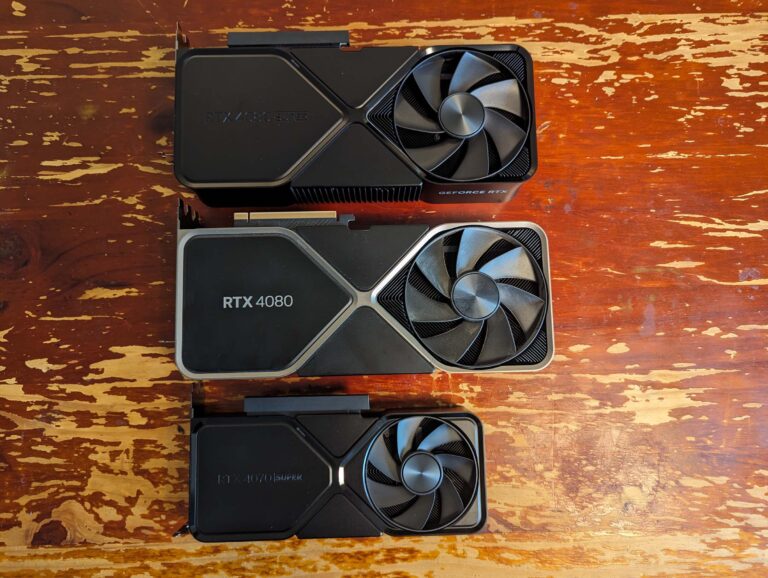
For benchmarks, I put games on their highest fidelity preset and tested at 1080p, 1440p and 4K native resolutions first. This is a great indicator of performance for most games, which may not include AI upscaling technologies like DLSS. I enabled the highest ray tracing setting for games that include the fidelity feature, but it wasn’t available/on for Red Dead Redemption 2, Call of Duty: Modern Warfare III or Total War: Warhammer 3. For comparison, the table below has RTX 4070 Super frame rates on the left and RTX 4080 results on the right.
At 1080p native resolution, there’s close performance for Avatar: Frontiers of Pandora and Red Dead Redemption 2. There’s more of a gap for Call of Duty: Modern Warfare III and The Talos Principle 2, with a minimum of 22% difference for all other games. It’s a similar story at 1440p, with Avatar, Red Dead and Warhammer 3 offering marginal differences before the 4080’s extra power takes a noticeable lead. Still, only Cyberpunk 2077 with the insanely demanding Overdrive ray tracing enabled has an unplayable frame rate.
For 4K, the lead is clearer, albeit Avatar and Red Dead only have marginal leads in the battle. Bear in mind that the 4080 is built for 4K native gaming, while the 4070 series is not, which is why these 4070 Super results are better than I expected. Things get even better with DLSS turned on—all set to Balanced performance—particularly for the games below that support DLSS 3: Returnal, Modern Warfare III, Dying Light 2, Cyberpunk 2077 and Hitman 3.
DLSS is where performance really shines. At 1080p, there are 50% and above performance boosts vs native resolutions on the RTX 4070 Super for Modern Warfare IIII, Cyberpunk 2077 and Hitman 3. It’s an even better story for 1440p, with Returnal, Modern Warfare III, Dying Light 2, Cyberpunk 2077 and Hitman 3 all offering at least a 50% boost to frame rate. For 4K resolutions, DLSS takes Cyberpunk 2077 from a 4 frames-per-second (fps) slideshow to a playable 40fps (a 90% boost). Outside of Red Dead and Avatar, both of which have very playable frame rates, all other DLSS games have at least a 40% boost with the 4070 Super.
- CPU: Intel Core i9-13900K (AI overclock)
- Motherboard: Asus ROG Maximus Z790 Hero (2102 BIOS)
- Memory: Kingson Fury Renegade RGB 32GB DDR5 6400MHz
- Power supply: Corsair AX1600i 1600W 80 Plus
- Monitor: Acer Predator XB273K UHD G-sync (up to 4K @ 120Hz)
- Case: Be Quiet Dark Base Pro 900 Rev. 2 (full tower)
- Operating system: Windows 11 Version 23H2 (OS Build 22631.3296)
- GPU driver: Nvidia GeForce Game Ready Drivers (551.86)
RTX 4070 Super gameplay and everyday
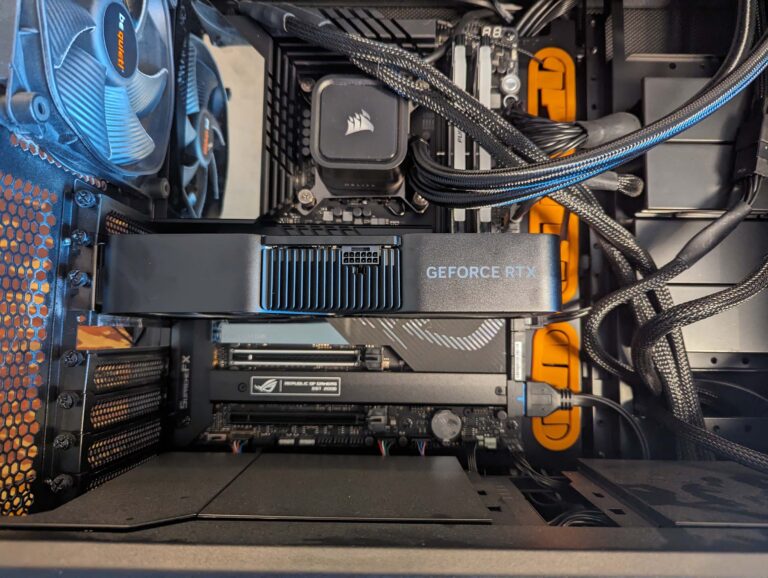
Graphics cards aren’t all about benchmarking with a curated list of games, though. I threw a bunch of my go-to games at the Nvidia GeForce RTX 4070 Super, too, and was continually impressed. I have a 4K 120Hz monitor, so I left maxed-out settings for these games at 4K resolutions.
Hell Let Loose scored an average of 131fps, which is impressive for a large-scale multiplayer game that’s historically been poorly optimised. Newer titles like Alone in the Dark and Horizon Forbidden West Complete Edition were impressive at 77fps and 44fps, respectively with native 4K resolution. A DLSS boost for Helldivers 2 saw it jump from a 50fps average to 90fps. Star Wars Jedi: Survivor felt rough at 33fps but then with DLSS 3 frame-gen, it felt very smooth at 81fps. More impressively, Alan Wake 2—the new GPU-melting game on the block—went from an unplayable 18fps at native 4K to a very playable 70fps with DLSS 3.
My new obsession Deep Rock Galactic: Survivor pulled an impressive 164fps at 4K native resolution, while the beautiful Witchfire game leapt from a decent 51fps with native 4K to a very smooth 111fps with DLSS 3 frame generation. Both of those last two games are early access titles, too, so anticipate even better performance for release.
For everyday computing, the hottest part of the graphics card gets up to 53 degrees. Meanwhile, the power draw didn’t get beyond 45W in my tests. The fans didn’t turn on during basic computing tasks, so there is no extra noise to contend with, except if you’re doing something that pushes the RTX 4070 like exporting a 4K video using Nvidia’s encoder. Below is the results of a HandBrake 4K encode of a 55-minute video.
4070 Super for new-release games
In early August 2024, I shifted my Nvidia GeForce RTX 4070 Super to my ageing backup PC. I’ve got it plugged into an entry-level LG 4K TV, and I mainly use it for PC gaming on the couch when I’m not at my battle station (specs for that above). Despite having mostly six-year-old innards, the Intel Core i7-8700K (overclocked to 4.6GHz) machine with 32GB of DDR-3200 RAM is still going strong. Thankfully, the 750W power supply is comfortably above the 650W recommended PSU for the 4070 Super.
Star Wars Outlaws
I’ve been wanting to test some new-release games, basically to see whether my ‘ancient’ PC can tackle the latest games in 4K resolution. For Star Wars Outlaws, the answer is yes, albeit with some caveats. At native 4K resolution, Outlaws was hanging around the low-to-mid 20fps range in the more demanding open world of the Toshara planet where I did my 2.2km speeder-sprint tests (no in-game benchmark, alas). DLSS 3.5 upscaling offered a respectable leap without frame-gen on and put me comfortably above 60fps with frame-gen enabled.
That’s incredibly impressive given Star Wars Outlaws gives the 4080 Super a run for its money at native 4K resolution and with AI frame-gen off. Bear in mind all of these tests are with an ultra graphics preset in Outlaws, and it absolutely looks the part with the power of Ubisoft’s Snowdrop engine, the same one behind the stunning Avatar: Frontiers of Pandora. Admittedly, the 4070 Super is more aimed at maxed-out 1440p resolutions, so I did most of my tests at that lower resolution. Despite the older CPU being pushed to its limits, the results were still impressive paired with the 4070 Super.
The only disclaimer there is the same as the one I made with my Star Wars Outlaws tests with the 4080 Super: namely, there’s an issue with the game dropping to lower-res textures. My tests and internet research suggest there’s also a video memory leak, and while I’ve had some temporary success with tweaks, the low-res textures tend to creep in during longer play sessions. Fingers crossed Ubisoft has rolled out a patch by the time you read this. Regardless, check out the benchmark results below.
Age of Mythology: Retold
After the weird benchmark results on my 4080 Super tests in a high-end desktop PC—where 82fps was the best result across 4K, 1440p and 1080p resolutions (with upscaling on and off)—I wasn’t expecting anything different with my 4070 Super benchmarks. I still think the Age of Mythology: Retold in-game benchmark tool is buggy, but I was impressed that I got just under 50fps at 4K with FSR 2.0 enabled. That’s with the same ultra preset as the 4080 Super PC, which was above the recommended high preset when I first booted up Retold with the 4070 Super PC.
I figured the lower results were, understandably, because of my aging parts and the less performative 4070 Super vs the 4080 Super. Still, it was surprising to see the Nvidia FrameView results with around 75% or lower GPU utilisation for most benchmarks and only 36% max usage for my ageing CPU. Basically, there wasn’t the expected GPU or CPU bottleneck. These are impressive and playable results for online play, even at 40fps with native 4K ultra settings. Regular gameplay is even more impressive, particularly the campaign that’s less demanding in terms of on-screen units and simulation. Age of Mythology: Retold is a gorgeous rendition of a fan-favourite entry in the Age of Empires pantheon that runs even better in campaign mode (around 70fps at 4K resolution with FSR 2.0 on during my tests).
Frostpunk 2
I can’t tell if it’s bad optimisation or Frostpunk 2 is pushing systems harder than I expected. Either way, Frostpunk 2 is an example of a recent game where it feels like AI upscaling is a necessity, unless you want to start compromising on fidelity settings. With High settings (one below Ultra High) and native 4K res, Frostpunk 2 is a slideshow. But with DLSS set to balanced and frame-gen on, Frostpunk 2 was a very playable 76fps in the main campaign with a 4070 Super. While that’s great news for 40-series owners, I wasn’t expecting Frostpunk 2 to be the ‘can it run Crysis?’ of 2024.
Space Marine 2
Given the 60fps-ish average frame rate for Space Marine 2 at native 4K resolution on my newer main PC (with a 4080 Super), I wasn’t expecting playable frame rates without the use of DLSS. Set to balanced DLSS and with default graphical settings, I was getting close to 60fps and didn’t see a drop below 45fps at 4K. If Space Marine 2 had an active-reload system, like its Gears of War influence, I’d say this was an issue. But without short frame-rate-sensitive reload bars, it’s not a particularly twitchy shooter, with generous melee-counter timing windows, so you’re better off not sacrificing the frankly gorgeous fidelity to max out frame rate. Admittedly, this was only initial testing, as I had a weird Steam bug that wouldn’t let me update Space Marine 2 for multiple patches (even after reinstallation).
Sumerian Six
Sumerian Six is a real-time tactics game with great gameplay and attractive stylised art design. In performance terms, my older 4070 Super desktop PC was getting a very playable 63fps average on a mid-campaign mission teeming with enemies. That’s with maxed-out visual settings and with DLAA, for even prettier fidelity. With DLSS set to balanced, it was even better at 81fps. Given the great art design and slower-paced gameplay, it’s definitely worth sticking to any frame rate above 60fps to maintain the pretty. You really don’t need more than 60fps for this subgenre of games.
The Plucky Squire
When The Plucky Squire’s recommended system requirements list a GeForce 1080 as enough to get 60fps at 1080p with high visual settings, you know this isn’t going to be a hardware-melting game. While I pulled around 250fps with my 4080 Super tests, The Plucky Squire dropped to around 150fps on the 4070 Super rig. Given my backup PC is connected to a 4K television that can only manage 4K at 60Hz, getting 150fps is absolutely overkill. Bottom line: you shouldn’t have any issues running The Plucky Squire on a 4070 Super.
Diablo IV: Vessel of Hatred
I got a little brazen with Diablo IV, and matched graphical settings between old PC and my newer one rocking a 4080 Super. In fairness, out in the open world, I was getting around 60fps, but there were some very distracting moments of stutter. After some googling, it turns out that was with Vsync on, sigh. With Vsync disabled—and, perhaps more importantly, with the max frame rate set to 400fps—the stutters went away and the frame rate went up in the open world. Practically speaking, I was getting around 102fps on average during flashy effects-heavy combat. In 2024, Diablo IV is still gorgeous and very, very playable at 4K with DLSS set to balanced. That’s without frame-gen, either, so there are likely more frames to be found once that’s reintegrated (it was temporarily disabled at the time of testing).
Silent Hill 2
Silent Hill 2 is another one of those recent games that feels very reliant on AI upscaling. Admittedly, it didn’t have any form of frame-gen as an option at the time of writing, so it’s not like a 40-series graphics card has that generation-specific DLSS edge. Still, it was unplayable in the opening section at maxed-out 4K resolution even with DLSS set to Balanced. Things were better at Medium fidelity settings with ray tracing on, though that was still between 40–50fps, which doesn’t fare well for more demanding parts later in the game. With ray tracing off—which, admittedly, is an immersion hit because of what the tech adds to the overall gorgeousness—I was getting around 70fps, then losing about 5fps for High and then Epic graphical settings incremental bumps. Silent Hill 2 is genuinely gorgeous, so it’s well worth tinkering to find that sweet point between a playable frame rate while maintaining as much of the intention of the highest possible fidelity settings.
Black Myth: Wukong
Black Myth: Wukong is yet another example of a recent release that feels like developers are starting to lean on AI upscaling in a big way. Arguably, more than they should. Regardless, while I was curious to see how it fared on the 4070 Super after some humbling native 4K results on the 4080 Super, I knew that native wasn’t the right res for Black Myth. That said, the in-game benchmark managed a decent 47fps on my ageing backup PC with the 4070 Super set to DLSS Balanced with frame-gen enabled.
The fairer tests, though, are at 1440p, given the 4070 Super is built for that resolution. I had the graphical settings at Very High (one below the top ‘Cinematic’ setting, which I used for the 4080 Super), and was immediately humbled with 24fps native 1440p benchmark results. That gets more playable with DLSS on (51fps) and even better with 40-series frame-gen at 73fps. For comparison, 1080p native res came in at 38fps with the benchmark.
But there is a disclaimer here. These initial benchmark results below were done before I followed renowned optimiser Fr33thy’s hours-long Windows 11 optimisation guide. With Windows 11 tweaked to its most optimal gaming state, I repeated the benchmarks. At 4K with frame-gen on, I gained around 37% better frames. At 1440p, it was 29% gains with frame-gen on, 34% with DLSS on (but frame-gen off), and 52% gains at native res, which took the game from a chunky 24fps to a playable 50fps in the benchmark. The native 1080p results had an impressive 44% boost in frame rate, too.
Is the RTX 4070 Super graphics card worth buying?
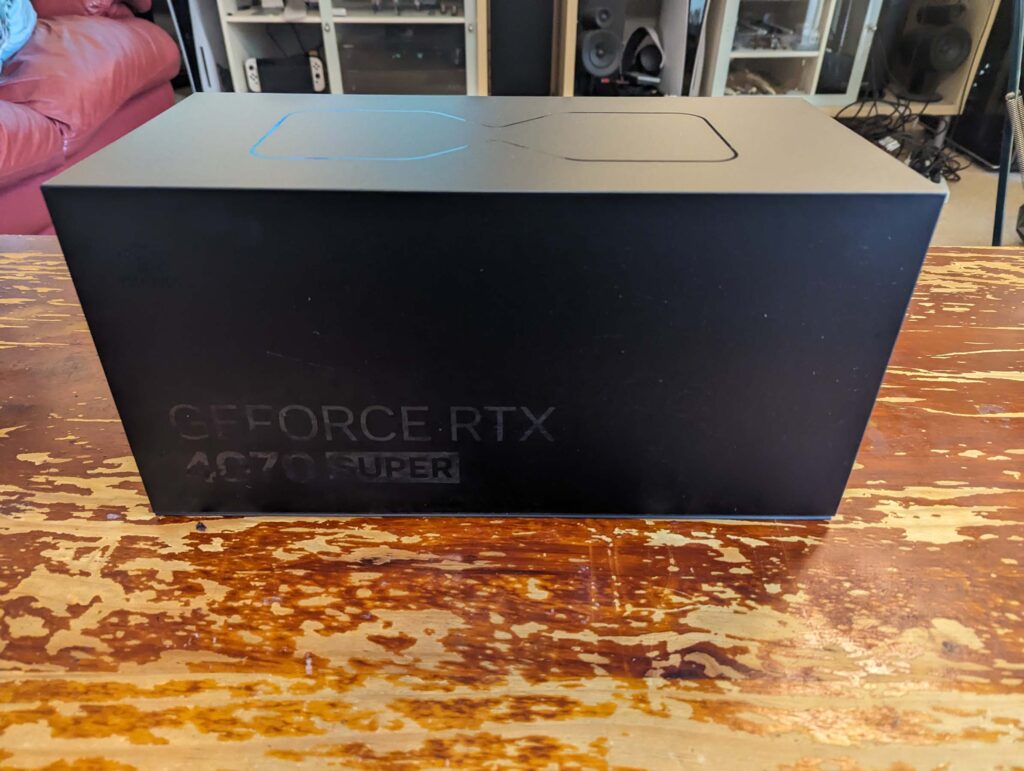
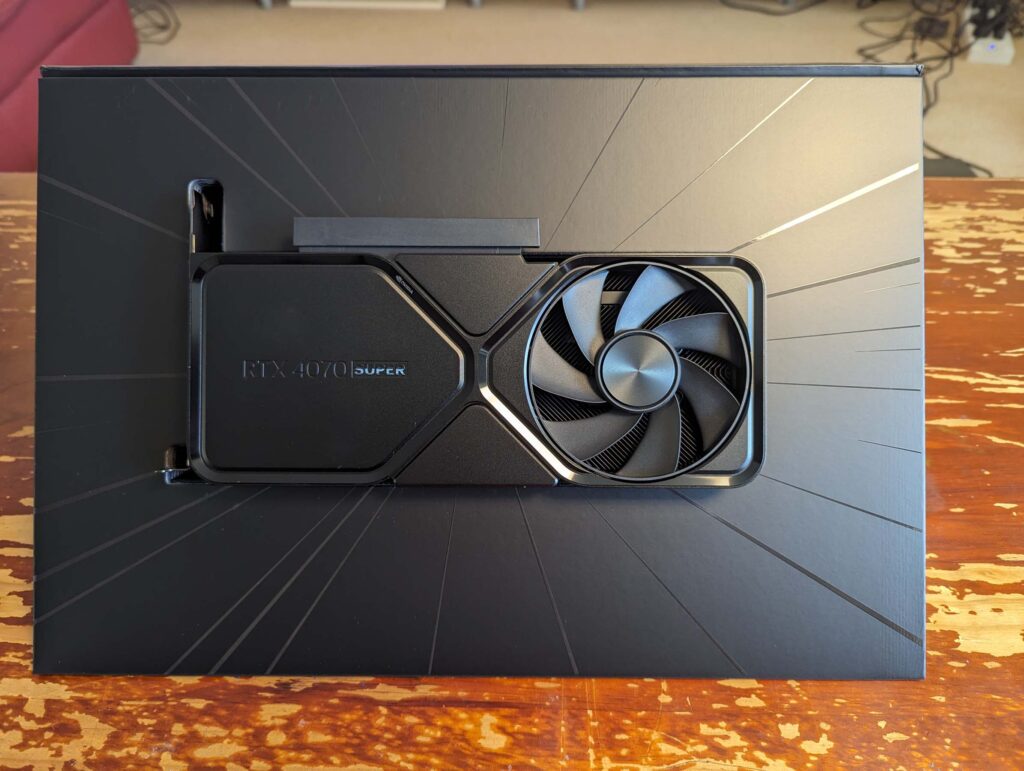
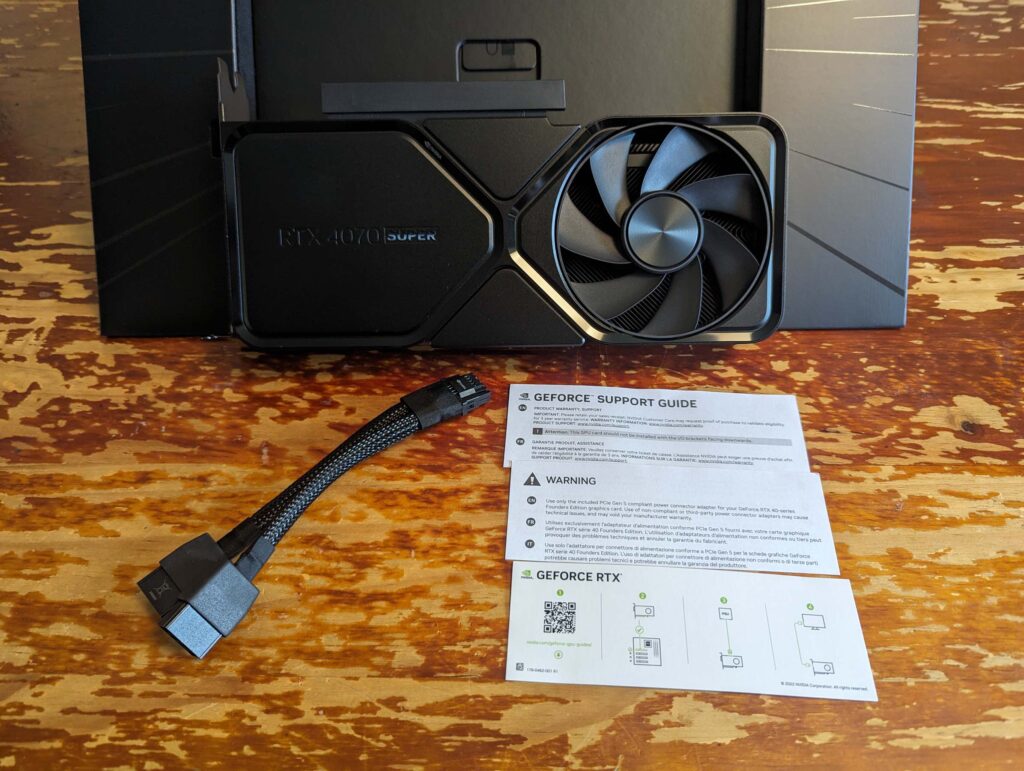
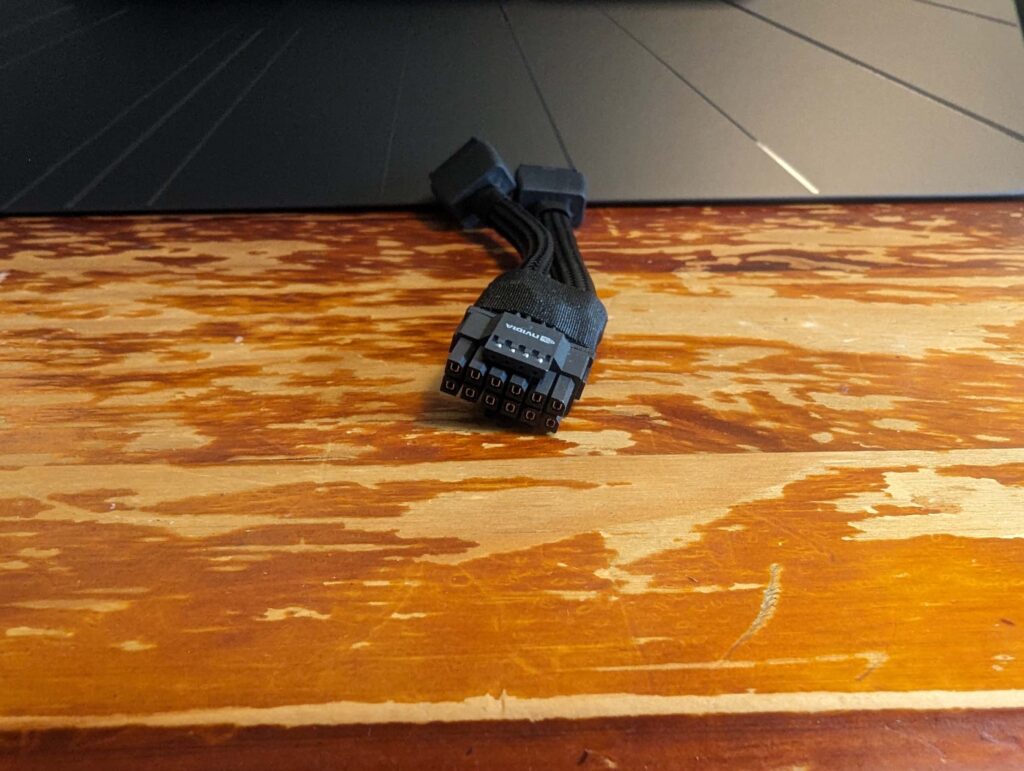
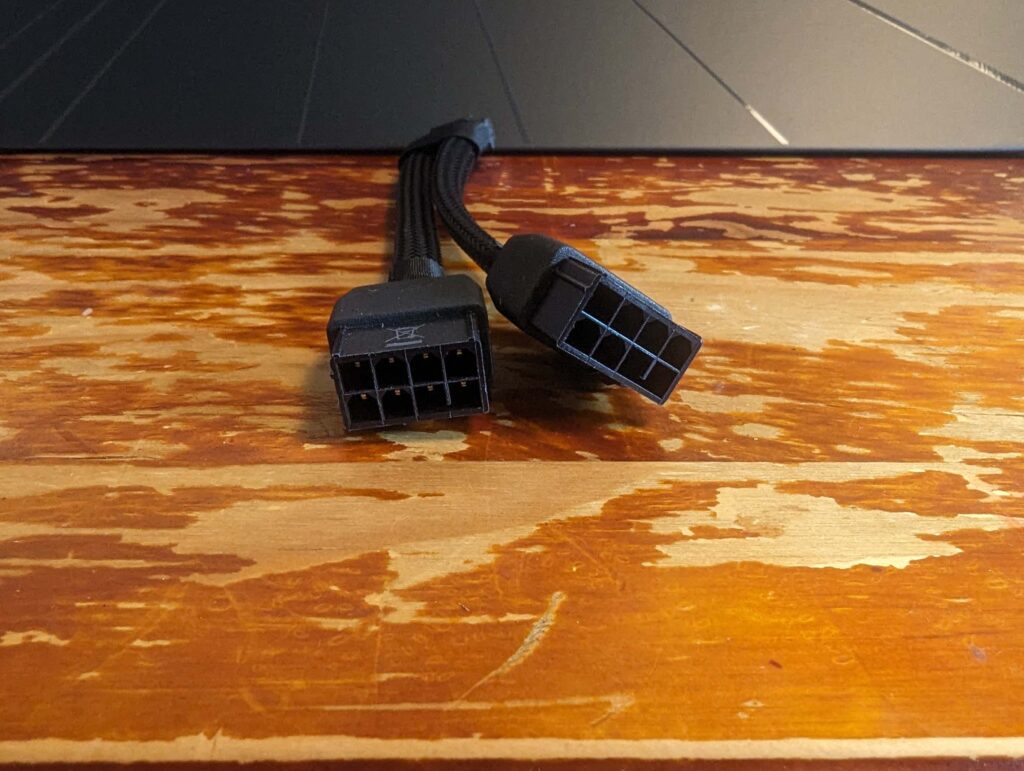
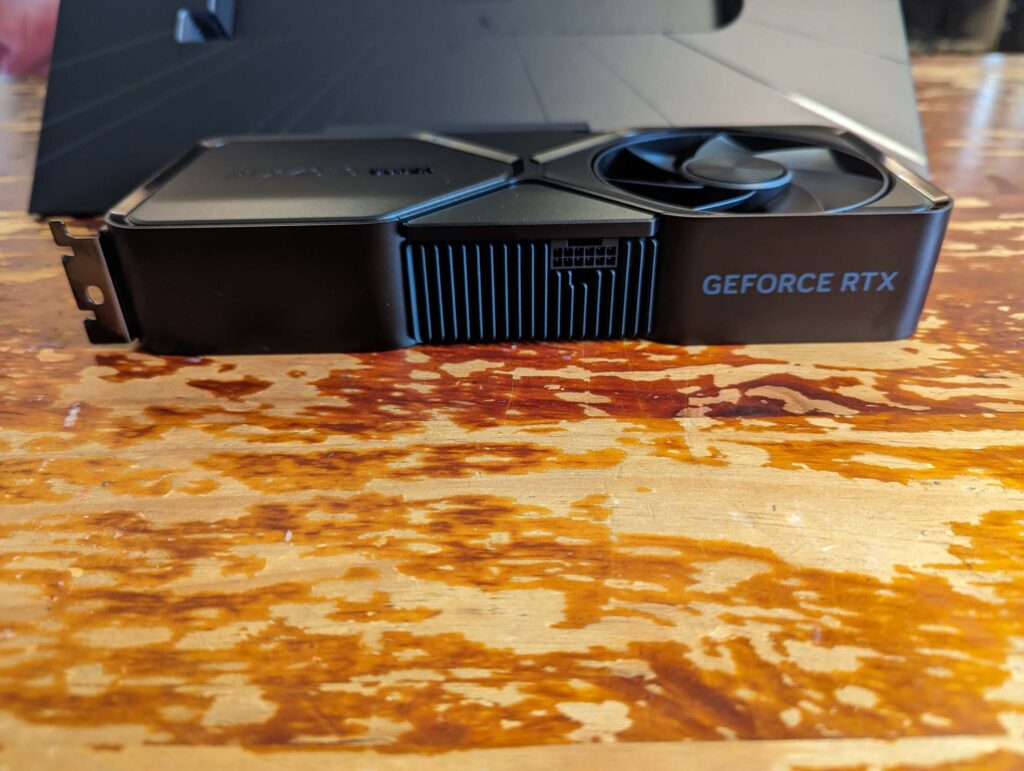
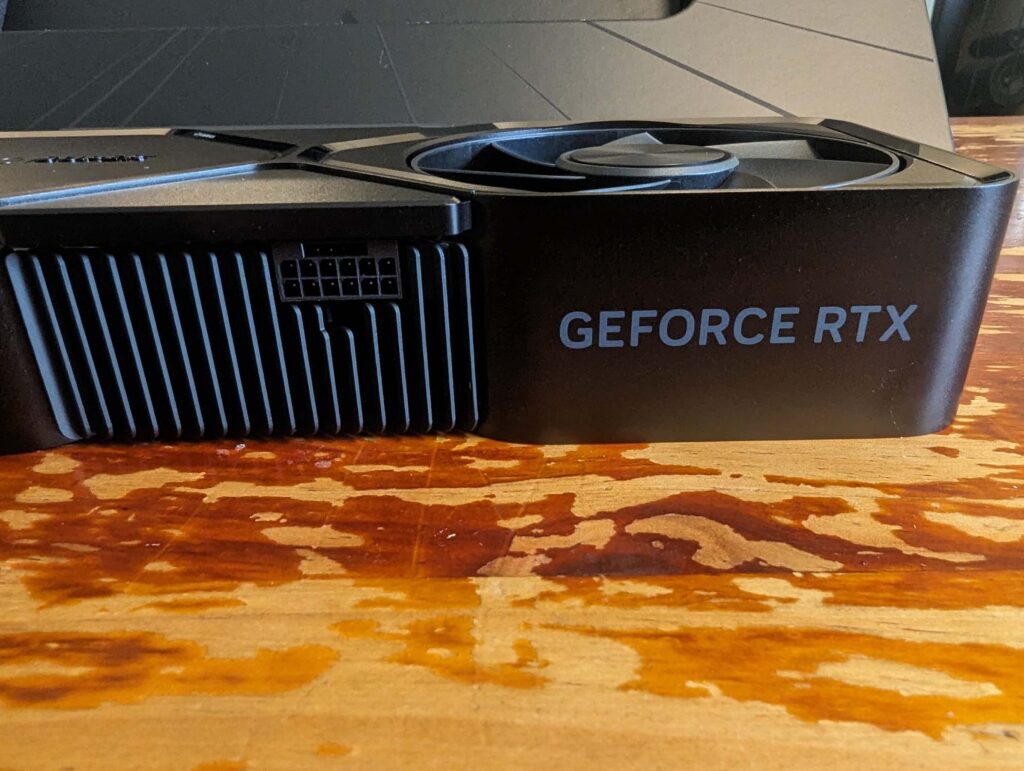
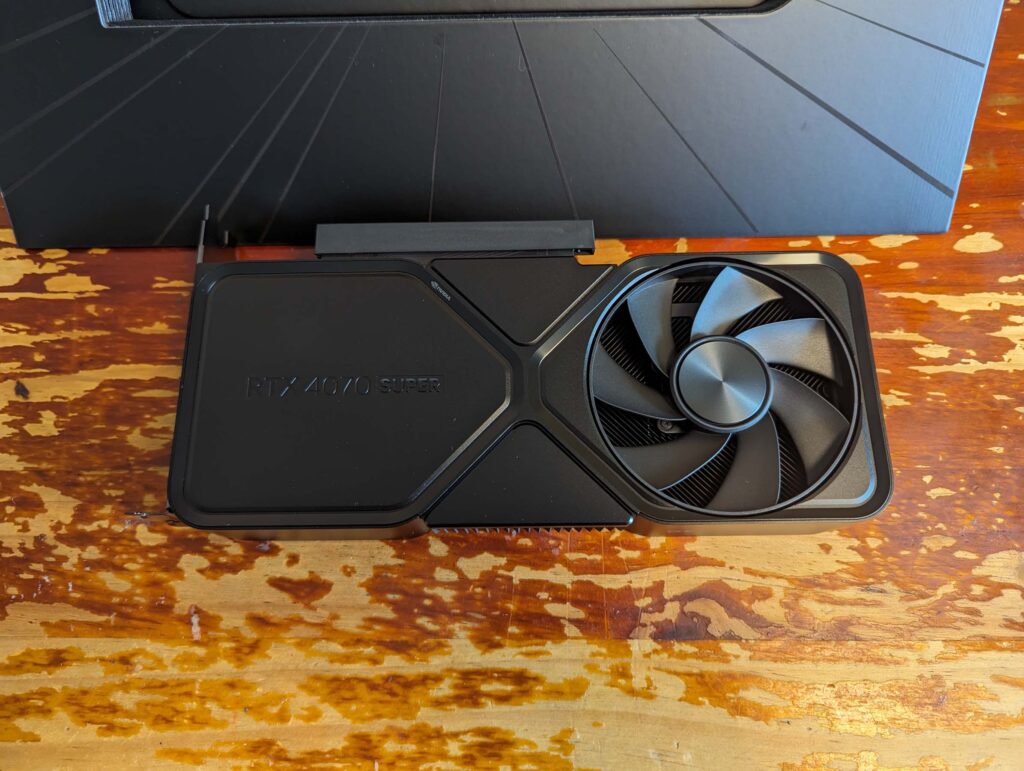
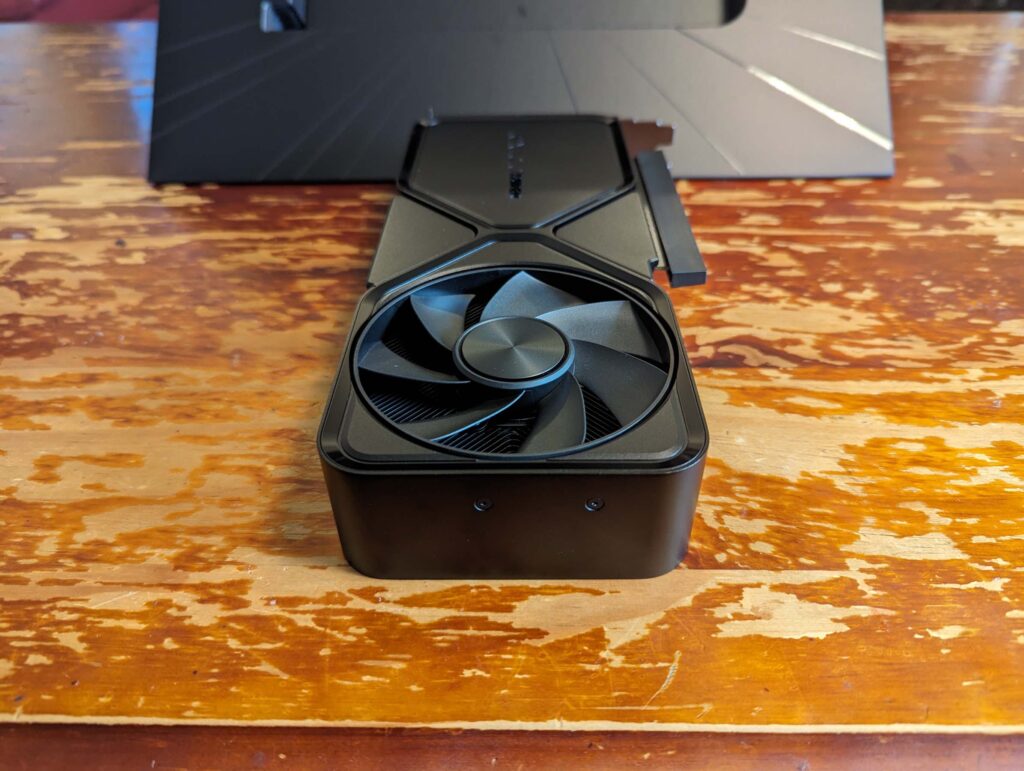
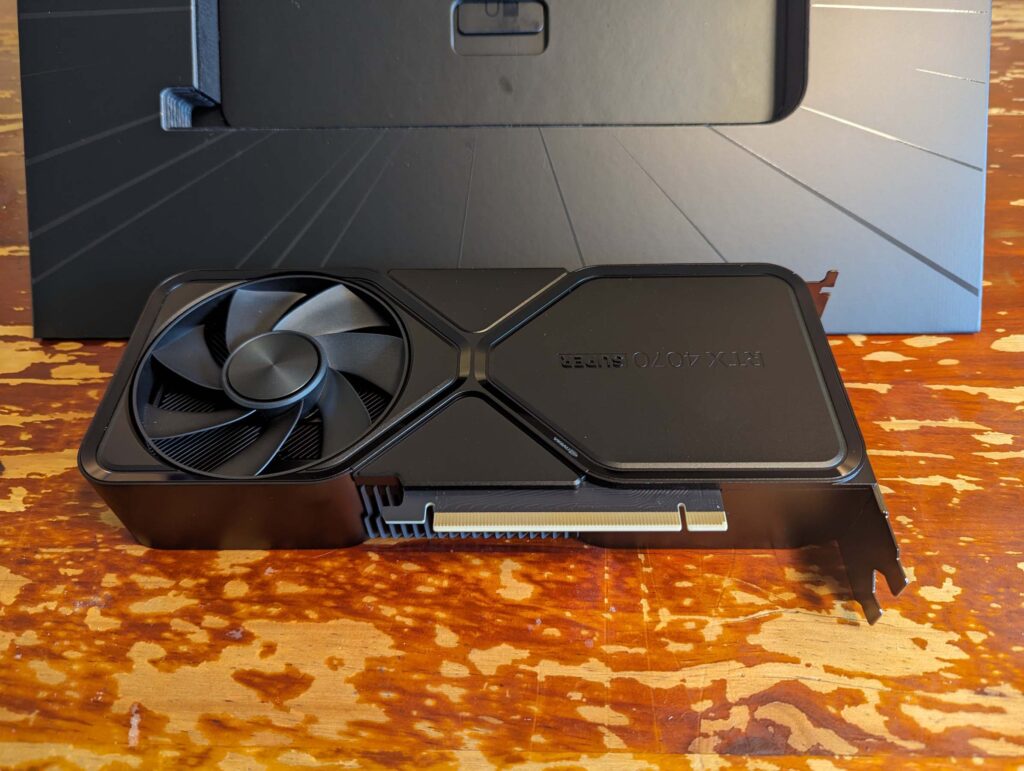
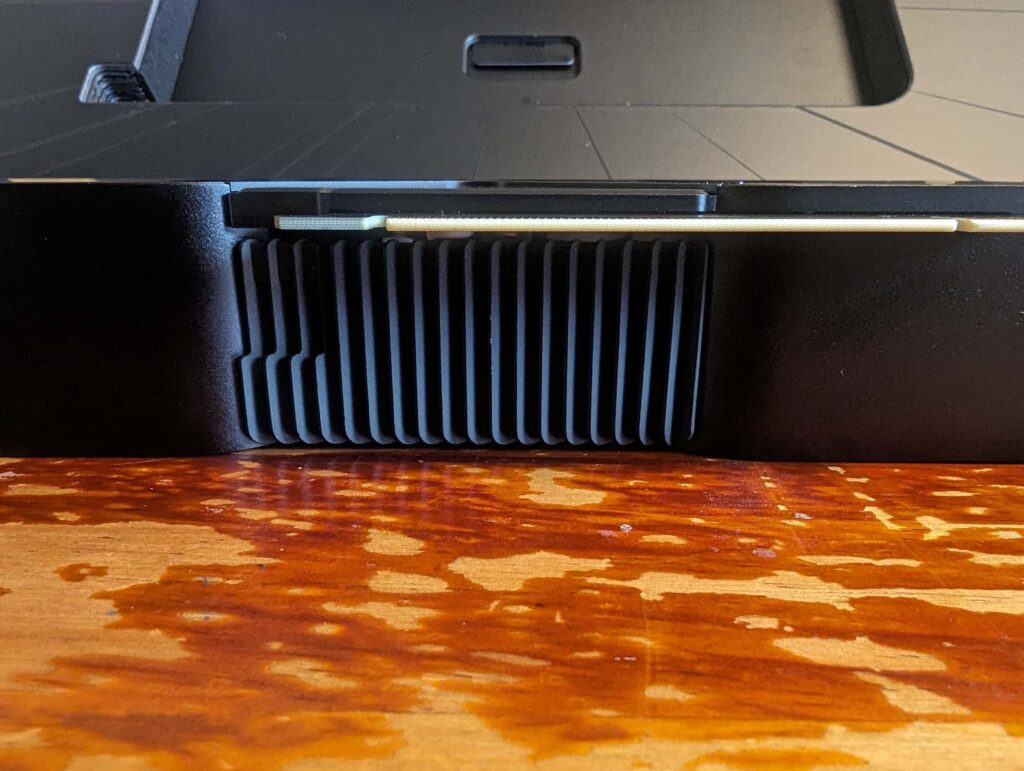
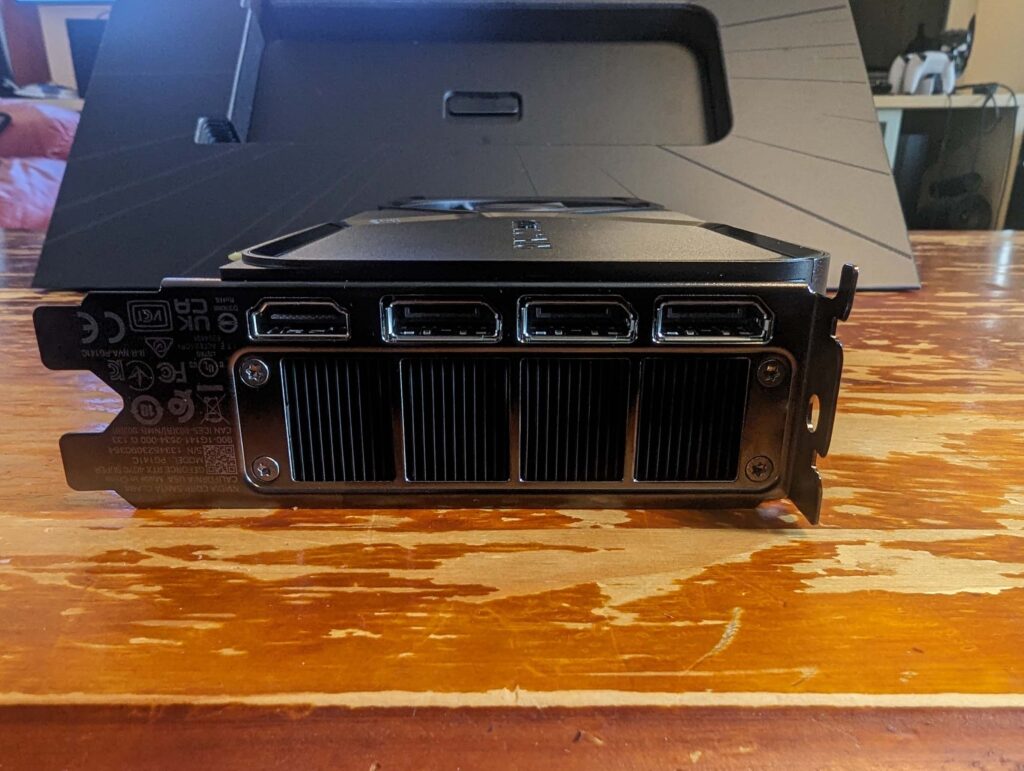
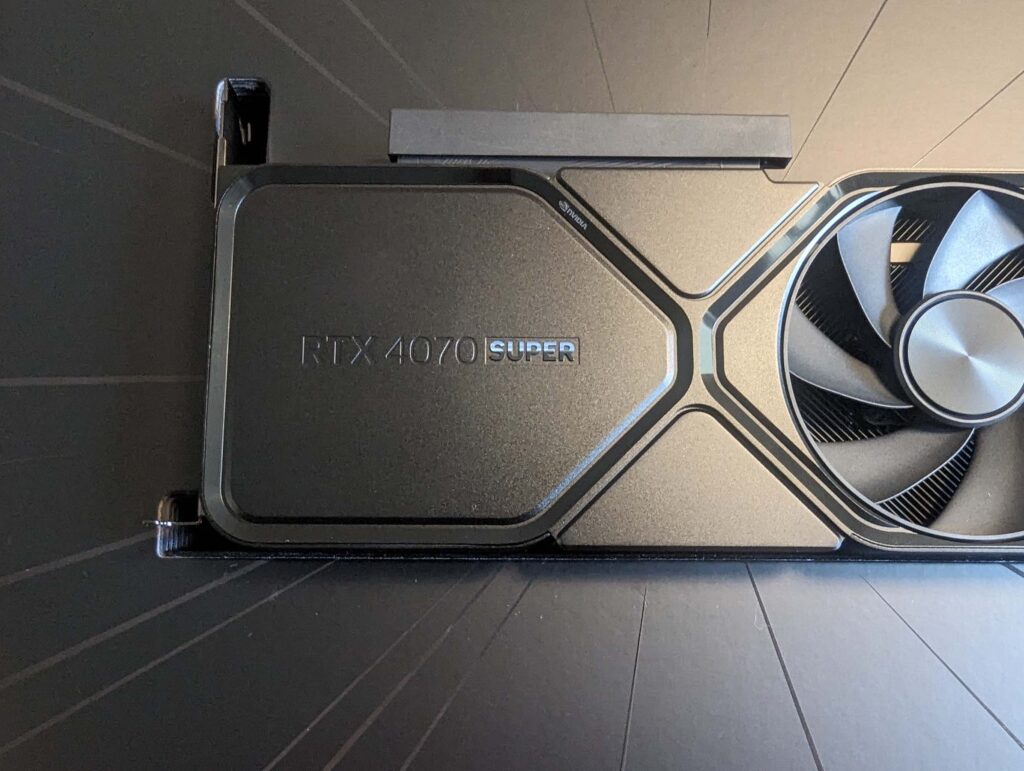
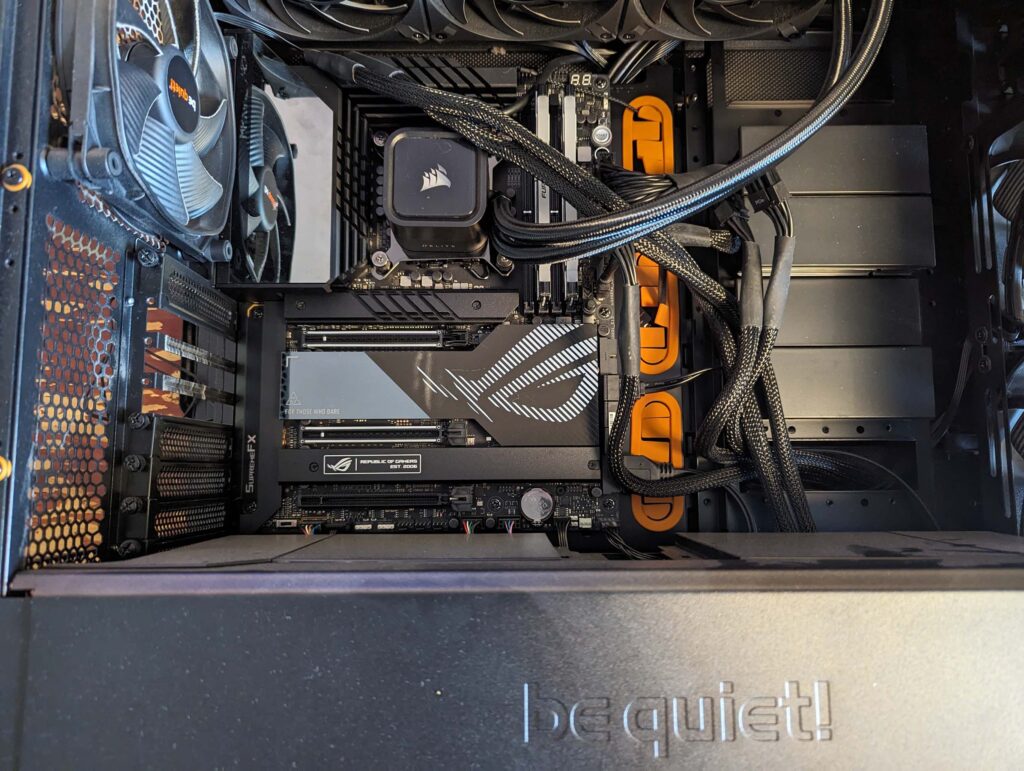
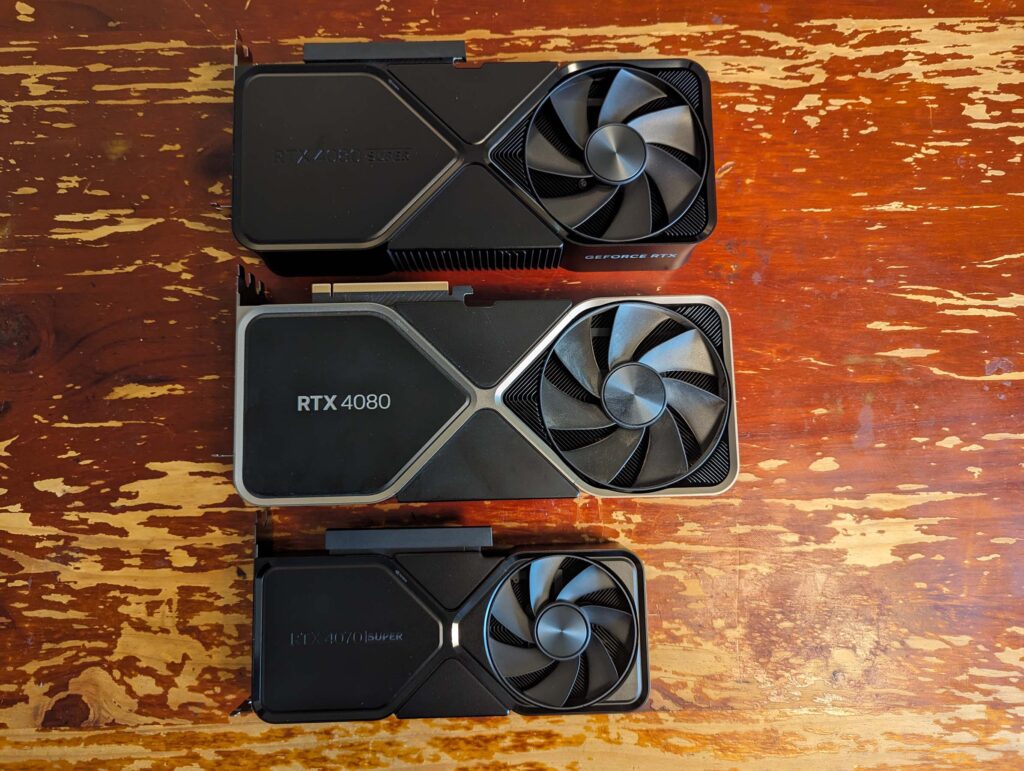
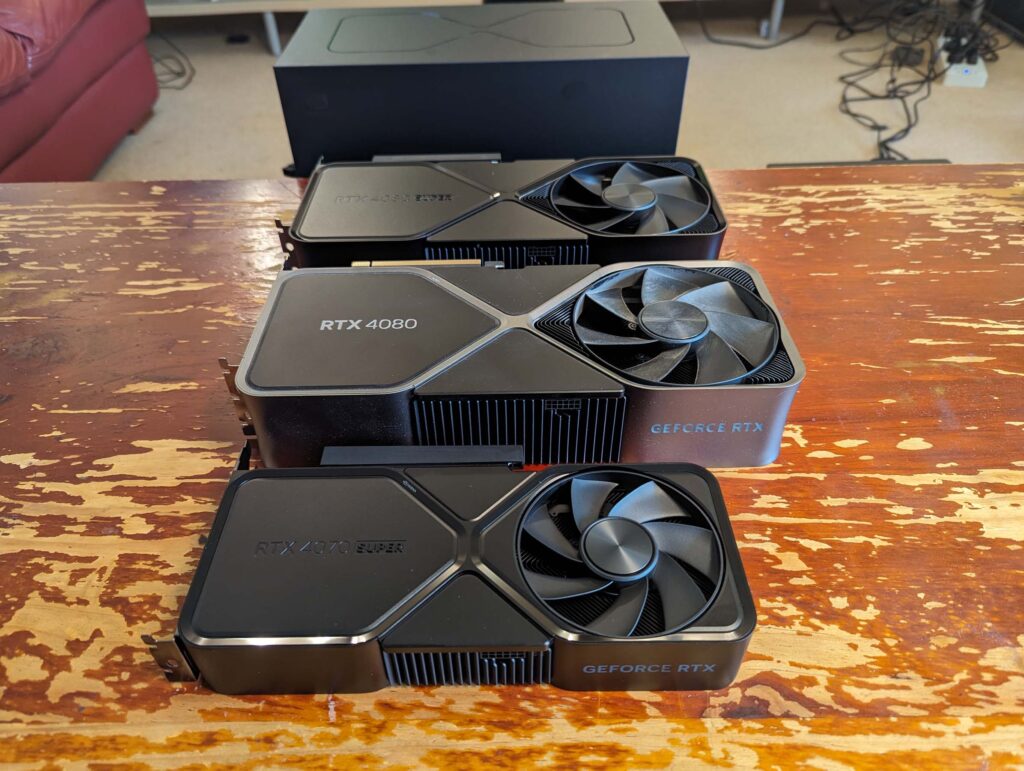
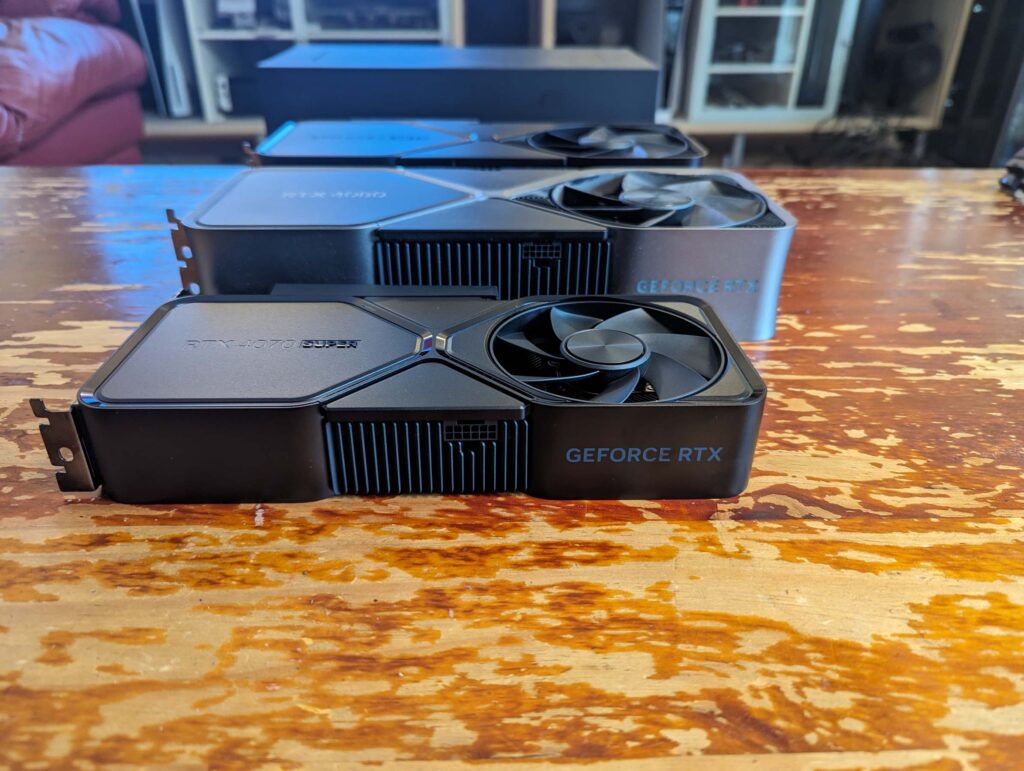
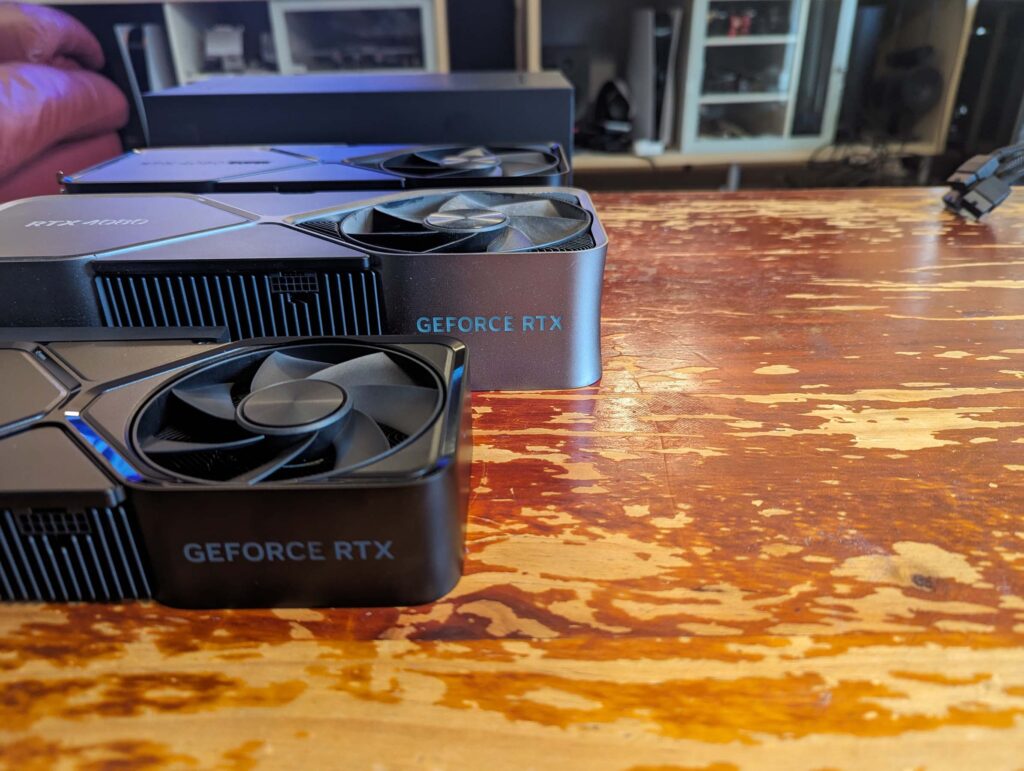
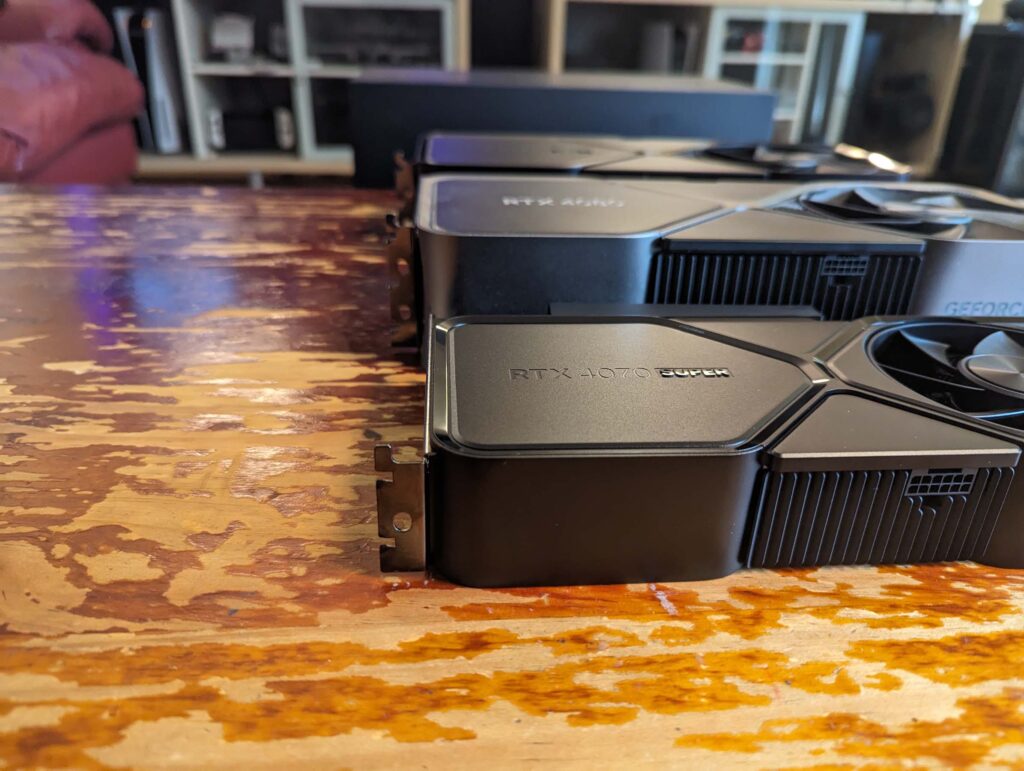
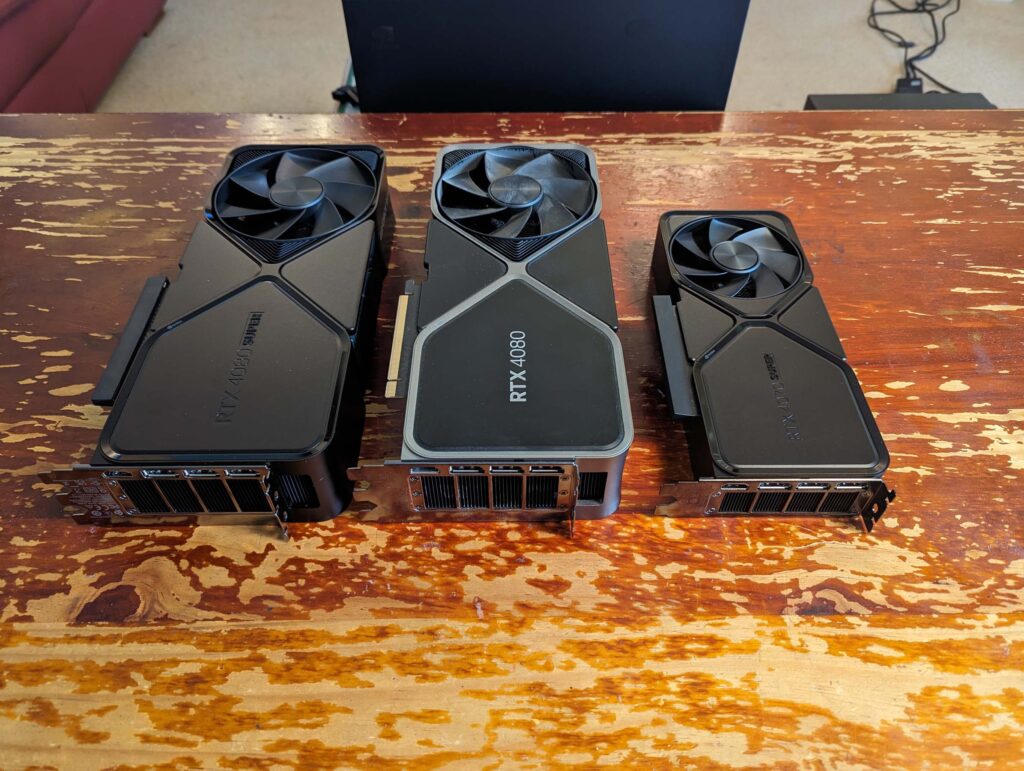
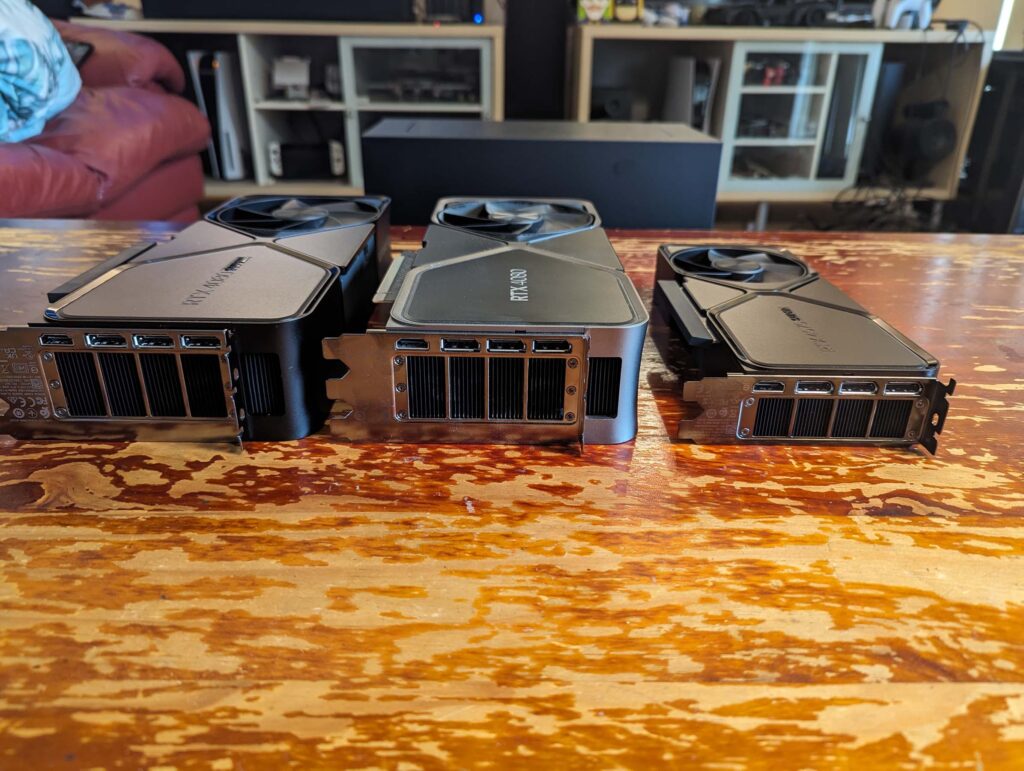
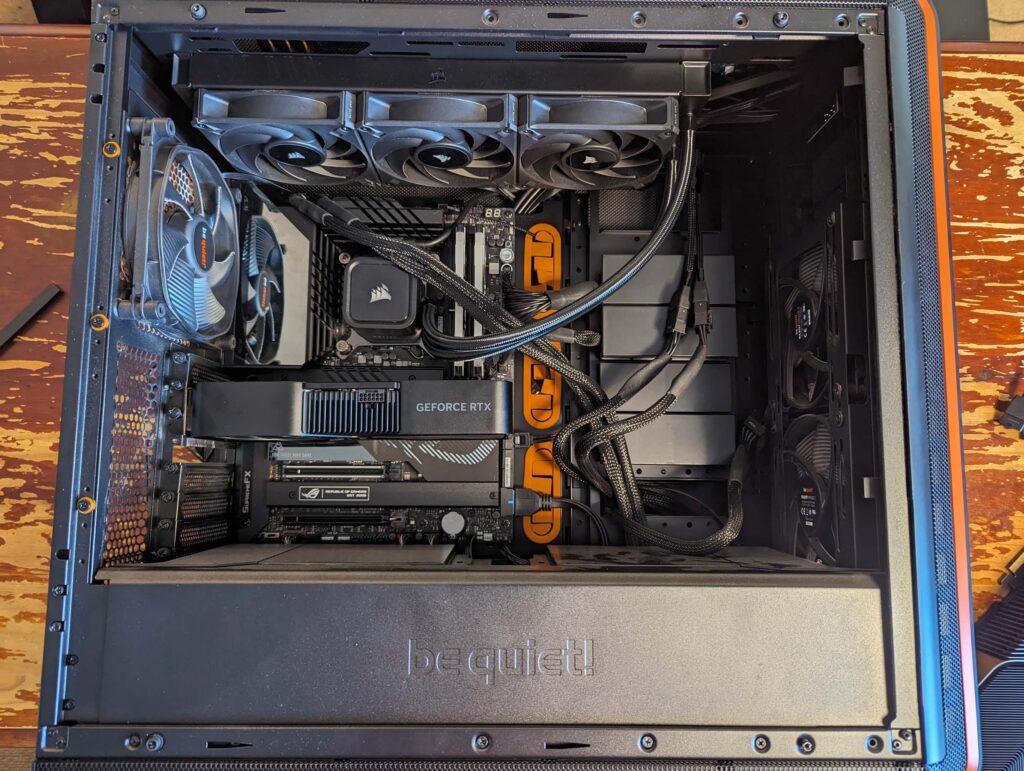
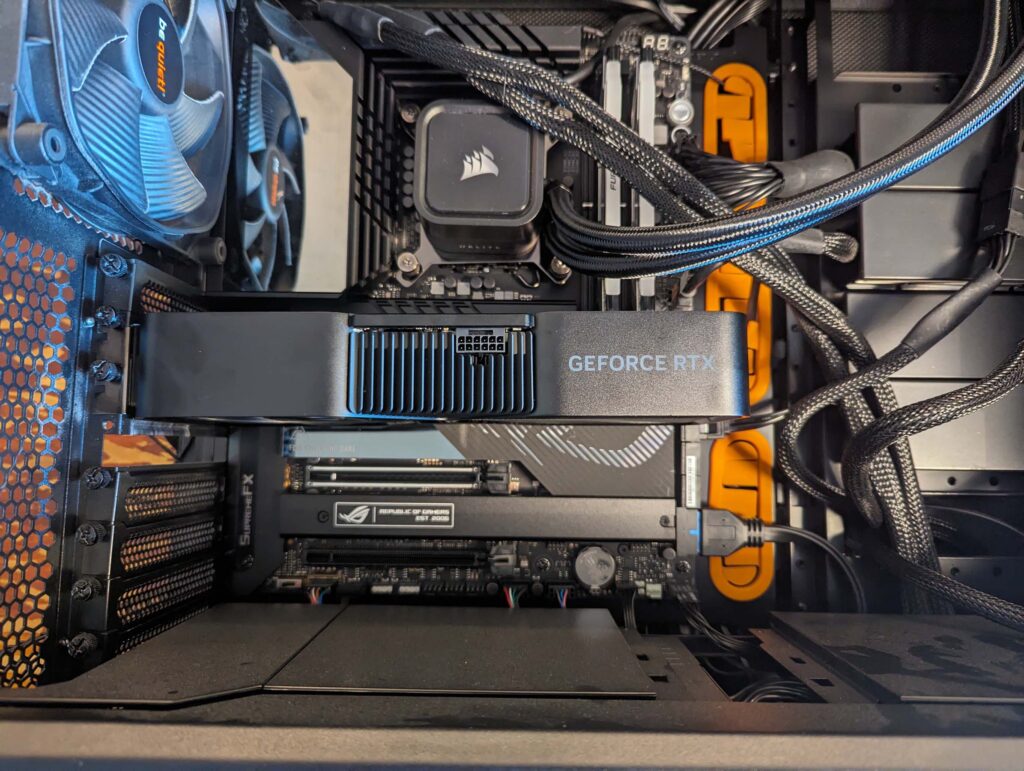
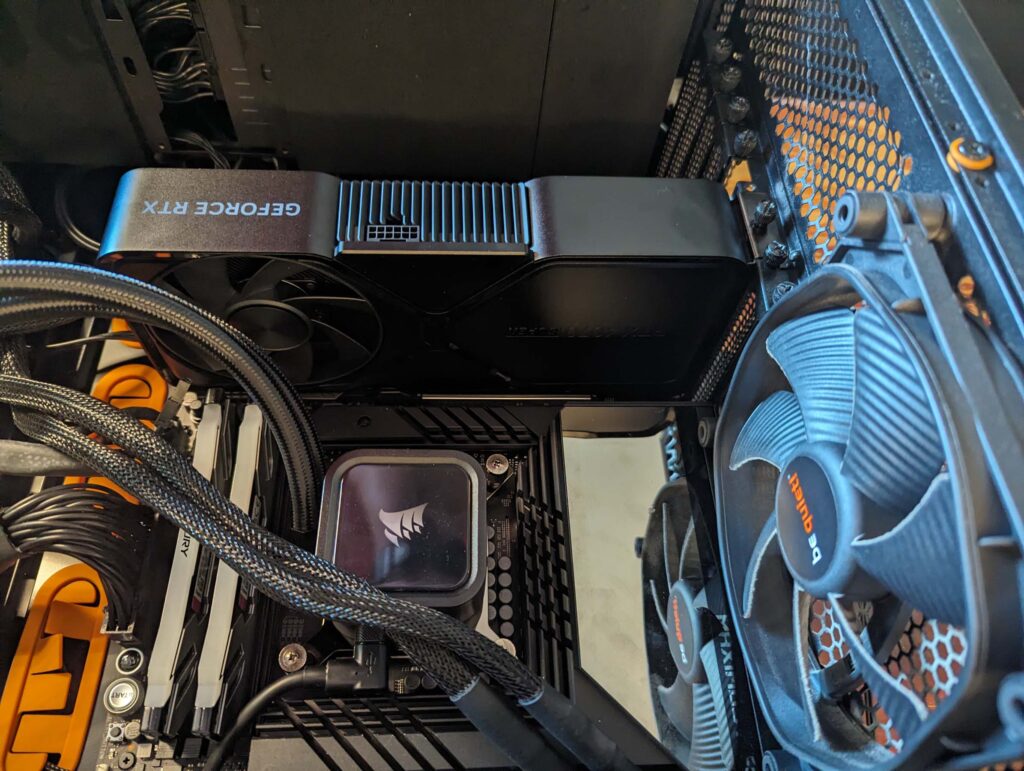
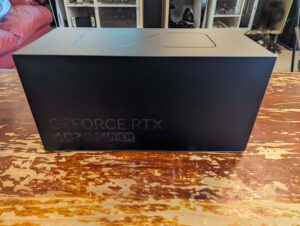
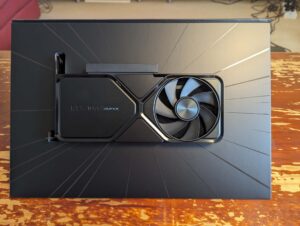
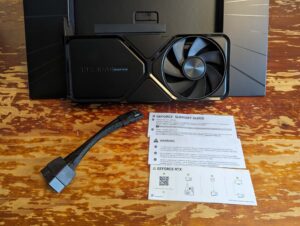

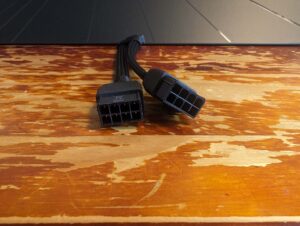
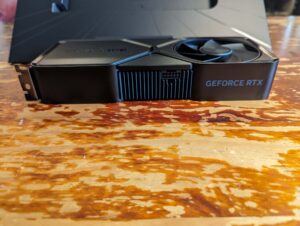
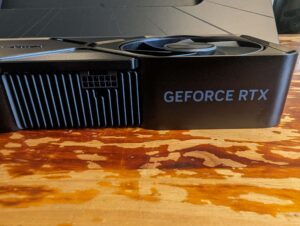
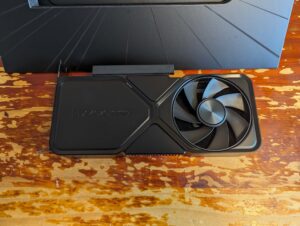
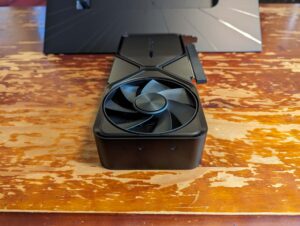
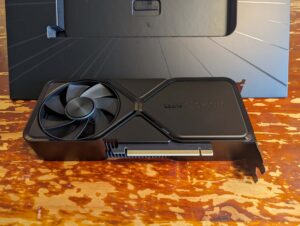
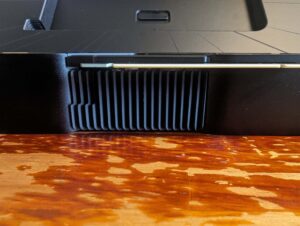
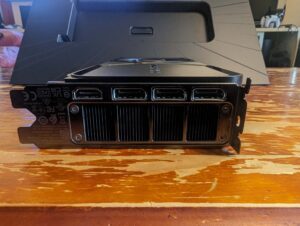
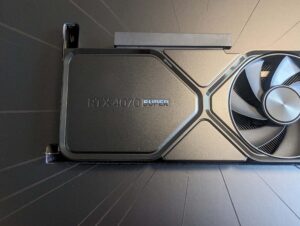
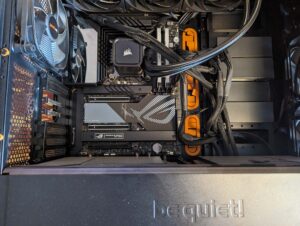
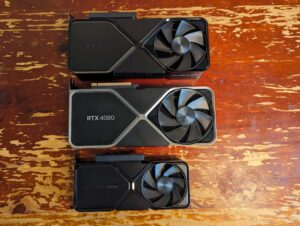
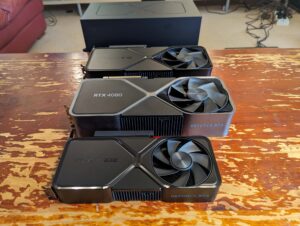
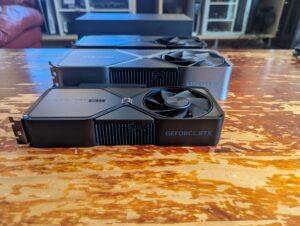
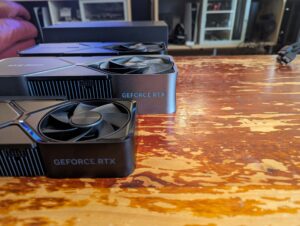
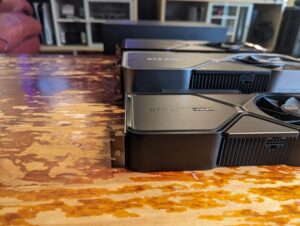
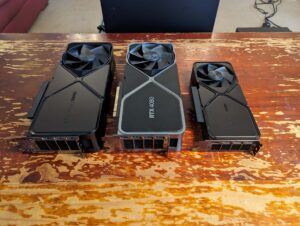
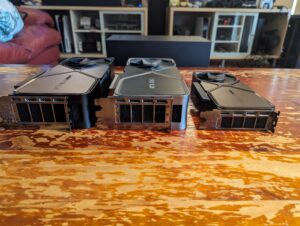
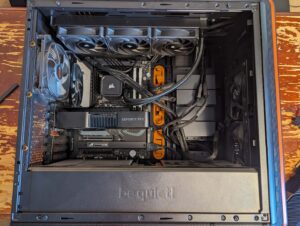
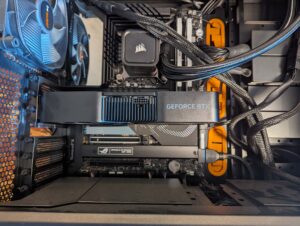
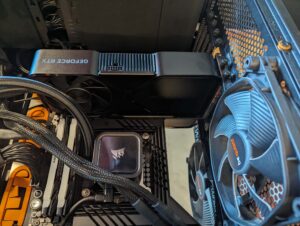
The Nvidia GeForce RTX 4070 Super is a fantastic graphics card. It’s quiet, low on power draw and doesn’t take up a whole lot of case space. Better yet, it has performance where it counts, both for its intended 1440p target resolution but also at 4K. If you’ve been waiting to upgrade from an earlier generation, the RTX 4070 Super is well worth a look.
How we review graphics cards
Our review starts with unboxing and installation. A good graphics card must come with any relevant adaptors to get it working out of the box. Similarly, we make note of any installation issues that arise in terms of weight, length, overall fit and concerns about blocked ports or potential airflow issues.
We use a core set of games with in-game benchmarks to determine base results for a graphics card, spread across 1080p, 1440p and 4K resolutions. Nvidia’s FrameView tool is enabled during capture to record key metrics, including average frame rates, GPU max temperatures and power draw.
Where possible, we contextualise these benchmarks by performing the same tests on older-model or competitor graphics cards. Next is to test AI upscaling and note performance gains, as well as testing the impact of fidelity features like ray tracing. Finally, we put the graphics card through the paces of typical use, including a mix of everyday computing and gaming stress tests.
Nvidia GeForce RTX 4070 Super frequently asked questions
Related Articles





